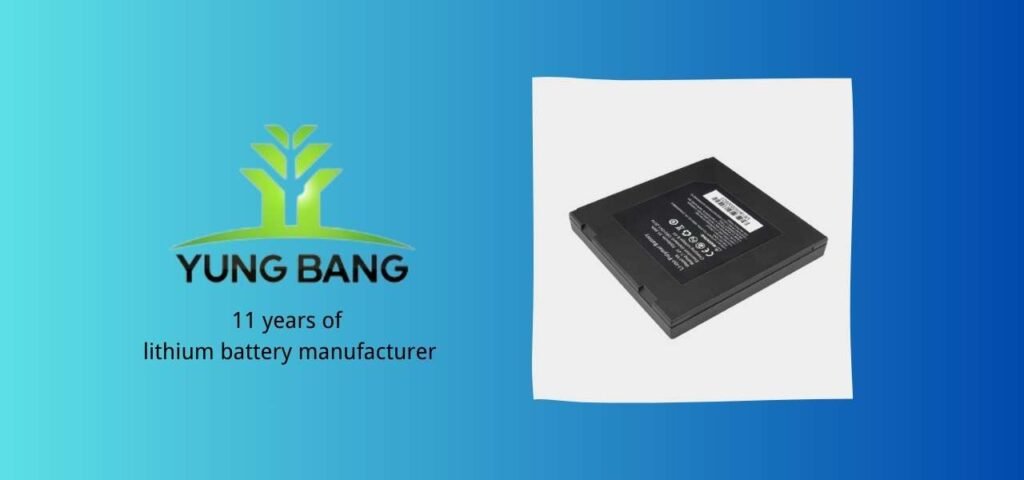1.What is the definition of a 100 watt-hour battery, and how is watt-hour defined?
A 100 watt-hour battery refers to its capacity of 100 watt-hours (Wh). Watt-hour (Wh) is a unit of electrical energy, indicating the amount of energy a battery or battery pack can provide, i.e., the energy supplied continuously at a rate of 1 watt (W) for one hour.
Specifically, 1 watt-hour (Wh) equals the energy produced by 1 watt (W) of power over a period of 1 hour (h). This can be calculated using the following formula:
Energy (Wh) = Power (W) × Time (h)
For example, a 100 watt-hour (Wh) battery means it can continuously supply power for 100 hours at a rate of 1 watt (or for 1 hour at a rate of 100 watts), providing a total of 100 watt-hours of energy.

2.What are 100 watt-hour batteries typically used for?
100 watt-hour batteries are typically used in devices or applications that require large-capacity power supplies. Here are some common applications:
Portable electronic devices: Such as laptops, tablets, portable computer monitors, etc. A 100 watt-hour battery capacity can provide extended periods of mobile office or entertainment use.
Outdoor activities: Such as camping, hiking, outdoor photography, etc. A 100 watt-hour battery can provide reliable power support for outdoor equipment (such as charging lights, GPS, wireless communication devices, etc.).
Power tools: Such as cordless drills, saws, wrenches, etc. A 100 watt-hour battery can provide long working hours of power support, enhancing work efficiency.
Emergency backup power: Such as household emergency backup power, mobile power banks, etc. A 100 watt-hour battery can be used as backup power in emergency situations, providing power for smartphones, lights, etc.
Drones and model aircraft: Used to provide flight power. A 100 watt-hour battery can provide relatively long flight times, suitable for some medium or large drones and model aircraft.
In summary, 100 watt-hour batteries are suitable for various devices and applications that require large-capacity power supplies, providing users with long-lasting, stable power support.
3.How does a 100 watt-hour battery differ from batteries with other capacities (such as mAh)?
100 watt-hours (Wh) and mAh (milliamp-hours) are two different units of battery capacity, and the main difference between them lies in how battery capacity is expressed:
Battery capacity units:
Watt-hour (Wh): Watt-hour is a unit of electrical energy, indicating the amount of energy a battery or battery pack can provide. It is measured in watt-hours and represents the energy supplied continuously at a rate of 1 watt for one hour.
mAh (milliamp-hour): mAh is a unit of electric charge, indicating the amount of charge a battery can store. It is measured in milliamp-hours and represents the time for which the battery can supply a current of 1 milliamp for one hour.
Application areas:
Wh (Watt-hour): Typically used to measure the energy storage capacity of large-capacity batteries, suitable for devices or applications that require long-term continuous power supply.
mAh (milliamp-hour): Typically used to measure the charge storage capacity of small-capacity batteries, suitable for portable electronic devices, mobile power supplies, etc. that require lightweight and compact design.
Conversion relationship:
Relationship between watt-hours and mAh: The conversion between watt-hours and mAh depends on the battery’s voltage. Generally, the following formula can be used for conversion: Wh = mAh × Voltage (V) × 0.001
Where voltage is usually measured in volts (V), and 0.001 is the coefficient for converting milliamp-hours to watt-hours.
In summary, watt-hours (Wh) and mAh (milliamp-hours) are two different units of battery capacity used to measure energy storage capacity and charge storage capacity, respectively. They are suitable for different types of batteries and application scenarios.
4.How to calculate the capacity of a 100 watt-hour battery? Is there a formula to calculate it?
To calculate the capacity of a 100 watt-hour battery, you can use the following formula:
Capacity (Wh) = Voltage (V) × Charge (Ah)
Where voltage (V) is the rated voltage of the battery, and charge (Ah) is the rated capacity of the battery, measured in ampere-hours (Ah).
To calculate the capacity of a 100 watt-hour battery, you need to know the battery’s voltage. Assuming the battery’s voltage is 7.4 volts (V), you can use the following calculation:
Capacity (Wh) = 7.4V × Charge (Ah)
5.What is the typical capacity of a 100 watt-hour battery? How does it relate to charging voltage?
Charging voltage is directly related to the capacity of a 100 watt-hour battery. An increase in charging voltage will increase the amount of charge per cycle for the battery, so at the same charging time, the higher the charging voltage, the higher the charging capacity of the battery.
However, it is important to note that the charging voltage must be within the range allowed by the battery specifications to avoid damage to the battery or safety risks. Therefore, when selecting a charger, appropriate charging voltage and chargers should be chosen based on the battery’s rated voltage and charging requirements.
6.How long can a 100 watt-hour battery typically power typical devices? What factors does it depend on?
The time a 100 watt-hour battery can power a typical device depends on several factors, including:
Device power requirements: The higher the power requirements of the device, the faster the battery’s energy consumption, so the shorter the working time supported by a battery with the same capacity.
Device usage patterns: The usage pattern of the device also affects the battery’s usage time. For example, when the device is in a high-load state, the battery’s power consumption rate increases, resulting in shorter working hours; while in a low-load state, the battery’s power consumption rate is relatively low, and the working time is relatively longer.
Battery capacity: The larger the capacity of a 100 watt-hour battery, the more energy it provides, and the longer it can support the device’s operation.
Device efficiency: The device’s energy utilization efficiency also affects the working time. Some devices may use electrical energy more efficiently than others, thereby extending the battery’s usage time.
Environmental conditions: Factors such as temperature and humidity also affect the battery’s performance and usage time. For example, in high-temperature environments, the battery’s charge loss rate may accelerate, resulting in shorter working hours.
7.What is the charging process for a 100 watt-hour battery? How long does it take to fully charge?
The charging process of a 100 watt-hour battery can be divided into several stages:
Constant current charging stage: At the beginning of charging, the charger provides a constant current to the battery until the battery voltage reaches the set charging voltage.
Constant voltage charging stage: When the battery voltage reaches the set charging voltage, the charger maintains a constant charging voltage, and the battery’s charging current gradually decreases until it approaches zero.
Charge termination: When the battery’s charging current decreases to near zero, the charger automatically stops supplying current to the battery, and the charging process ends.
The time required for a 100 watt-hour battery to fully charge depends on the charging rate of the charger and the charging capacity of the battery. The charging rate is usually measured in amperes (A), indicating the current supplied by the charger to the battery per hour. The charging capacity of the battery is measured in watt-hours (Wh) or ampere-hours (Ah).
For example, assuming the charging rate of the charger is 2 amperes (A), then the time required to fully charge a 100 watt-hour battery can be calculated using the following formula:
Time (hours) = Battery capacity (Wh) / Charging rate (A)
Therefore, if the charging rate of the charger is 2 amperes, then it will take approximately 50 hours to fully charge a 100 watt-hour battery. The actual charging time may vary due to different charging rates of chargers.

8.What is the discharge process for a 100 watt-hour battery? What is their output power?
The discharge process of a 100 watt-hour battery involves converting the energy stored in the battery into electrical current to power devices. The discharge process typically includes the following stages:
Initial stage: At the beginning of the discharge, the battery provides a constant voltage output, and the current flows out of the battery to supply the device’s needs.
Constant power output stage: For most of the discharge time, the battery provides a constant power output until the battery’s energy is depleted or the battery voltage drops to a certain level.
Late stage: As the battery’s energy approaches depletion, the battery’s voltage begins to drop, and the current output also decreases accordingly until the battery stops discharging.
The output power of a 100 watt-hour battery depends on the combination of its voltage and current output. Output power is typically measured in watts (W) and can be calculated using the following formula:
Output power (W) = Voltage (V) × Current (A)
Assuming the voltage of a 100 watt-hour battery is 7.4 volts (V), the output power will depend on the discharge current. If the battery’s discharge current is 10 amperes (A), then the output power can be calculated as follows:
Output power (W) = 7.4V × 10A = 74W
Therefore, if the voltage of a 100 watt-hour battery is 7.4V and the discharge current is 10A, then its output power is 74 watts. The actual output power will vary with changes in discharge current.
9.What does the cycle life of a 100 watt-hour battery mean? How is their lifespan affected by the number of charge-discharge cycles?
The cycle life of a 100 watt-hour battery refers to the number of charge and discharge cycles the battery can undergo while still maintaining its rated capacity and performance. Cycle life is typically measured in the number of charge-discharge cycles, i.e., one cycle from full charge to full discharge and back to full charge. The cycle life of a battery is an important indicator of its lifespan and reliability.
The number of charge-discharge cycles significantly affects the lifespan of a 100 watt-hour battery. Generally, the more charge-discharge cycles, the shorter the battery’s cycle life. Specifically, more charge-discharge cycles lead to more frequent internal chemical reactions, increased wear on electrode materials, and accelerated degradation of battery capacity and performance.
However, it is important to note that the cycle life of a 100 watt-hour battery is affected by various factors, not just the number of charge-discharge cycles. Other factors include the charging and discharging rate, charging and discharging temperature, depth of discharge, etc. For example, high-rate charging and discharging, high temperature, and deep discharge may accelerate battery degradation, thereby reducing cycle life.
Therefore, in practical use, to maximize the cycle life of a 100 watt-hour battery, users can take measures such as avoiding over-discharge, controlling the charging and discharging rate, maintaining appropriate charging temperature, etc. Additionally, choosing the right type and quality of battery, as well as the correct charger, can also positively impact extending the battery’s cycle life.
10.What does the self-discharge rate of a 100 watt-hour battery mean? Do they change over time?
The self-discharge rate of a 100 watt-hour battery refers to the rate at which the battery naturally loses charge while in storage or idle state. In other words, even without charge or discharge operations, the battery gradually loses charge due to internal chemical reactions, resulting in a decrease in battery capacity.
The self-discharge rate is usually based on time, such as the percentage of charge lost per day or per month. A lower self-discharge rate means the battery retains charge for a longer time during storage and is more suitable as a backup power source or for long-term storage.
The self-discharge rate is typically influenced by various factors, including battery type, chemical composition, temperature, and storage conditions. Generally, lithium-ion batteries have lower self-discharge rates compared to nickel-metal hydride batteries because the chemical reactions in lithium-ion batteries are relatively stable. Temperature is also an important factor, with higher temperatures usually resulting in higher self-discharge rates.
Additionally, the self-discharge rate of batteries may change over time. Used batteries and aged batteries may exhibit higher self-discharge rates as internal chemical reactions have changed, leading to accelerated battery deterioration and charge loss. Therefore, when storing batteries for a long time, it is important to monitor the self-discharge rate and periodically charge to maintain battery performance and capacity.
11.What is the operating temperature range of a 100 watt-hour battery? How do high and low temperatures affect their performance?
The operating temperature range of a 100 watt-hour battery typically depends on the battery type and chemical composition. However, generally, the operating temperature range of baterías de iones de litio is around -20°C to 60°C. This is a general range, and the specific operating temperature range may vary depending on the battery brand, model, and design. Generally, within this range, the battery can operate normally and provide stable performance.
High and low temperatures both affect the performance of a 100 watt-hour battery:
Effects of high temperature: High temperatures accelerate internal chemical reactions, increase self-discharge rates, exacerbate battery aging, and reduce battery cycle life. Charging or discharging at high temperatures may also cause battery overheating, leakage, or even explosion.
Effects of low temperature: Low temperatures slow down internal chemical reactions, decrease the battery’s discharge capacity and output power. At extremely low temperatures, the battery may fail to operate properly or temporarily fail. Additionally, low temperatures increase the internal resistance of the battery, slowing down the battery’s discharge rate.
Therefore, in practical use, it is advisable to avoid exposing 100 watt-hour batteries to extreme high or low temperature environments to ensure their performance and safety. If batteries need to be used in extreme temperature conditions, special design batteries with wider operating temperature ranges or other measures to protect the batteries, such as heating or cooling control systems, are recommended.

12.How long does a 100 watt-hour battery last? What factors determine its lifespan?
The lifespan of a 100 watt-hour battery depends on various factors, including:
Device power requirements: The higher the power requirements of the device, the faster the battery’s energy consumption, so a battery with the same capacity can support a shorter working time.
Device usage patterns: The device’s usage patterns also affect the battery’s usage time. For example, when the device is under high load, the battery’s power consumption rate increases, resulting in a shorter working time; when it is under low load, the battery’s power consumption rate is relatively low, resulting in a longer working time.
Battery capacity: The larger the capacity of a 100 watt-hour battery, the more energy it provides, and the longer it can support device operation.
Device efficiency: The device’s energy efficiency also affects the working time. Some devices may use energy more efficiently than others, resulting in longer battery life.
Environmental conditions: Environmental factors such as temperature and humidity also affect battery performance and usage time. For example, in high-temperature environments, the rate of battery charge loss may accelerate, resulting in a shorter working time.
The specific duration a 100 watt-hour battery lasts depends on these factors and may vary widely in different usage scenarios.
13.How does a 100 watt-hour battery differ from other types of batteries such as lithium-ion or nickel-metal hydride batteries?
A 100 watt-hour battery does not represent a specific type of battery but rather denotes the energy capacity of the battery. Therefore, a 100 watt-hour battery can be of various types, including lithium-ion batteries and nickel-metal hydride batteries. Here are some differences between a 100 watt-hour battery and lithium-ion and nickel-metal hydride batteries:
Chemical composition:
Lithium-ion batteries: Use lithium compounds as positive and negative electrode materials, such as lithium cobalt oxide (LiCoO2), lithium iron phosphate (LiFePO4), etc.
Nickel-metal hydride batteries: The positive electrode uses nickel hydroxide (Ni(OH)2), and the negative electrode uses titanium hydride or titanium oxide.
Energy density:
Baterías de iones de litio: Have higher energy density, are lightweight, and are suitable for applications such as portable electronic devices.
Nickel-metal hydride batteries: Have relatively lower energy density and larger volume but have longer cycle life and higher safety.
Charge-discharge characteristics:
Lithium-ion batteries: Have lower self-discharge rates, fast charging rates, and are suitable for high-power applications.
Nickel-metal hydride batteries: Have slower charge-discharge rates, higher requirements for chargers, but have longer cycle life and higher safety.
Coste:
Lithium-ion batteries: Relatively higher cost, but prices are gradually decreasing.
Nickel-metal hydride batteries: Relatively lower cost but have shorter cycle life.
In summary, a 100 watt-hour battery can be of various types, including lithium-ion and nickel-metal hydride batteries. They differ in chemical composition, energy density, charge-discharge characteristics, and cost, thus suitable for different applications and usage scenarios.
